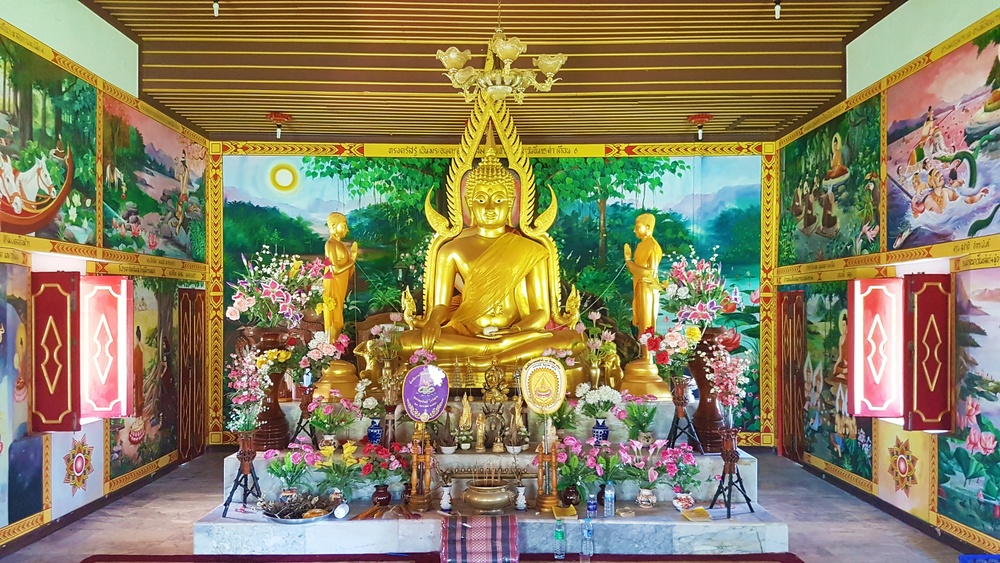India, the birthplace of Buddhism, is home to several sacred sites associated with the life and teachings of Lord Buddha. But beyond its historical landmarks and monasteries, the country also celebrates an array of vibrant and spiritually rich festivals that keep the essence of Buddhism alive. From solemn observances to colorful rituals, Buddhist festivals in India offer an immersive experience of devotion, culture, and community.
In this article, we journey through some of the most important Buddhist festivals in India — from the sacred Buddha Purnima to the joyful Tibetan New Year, Losar.
Buddha Purnima: Honoring the Life of the Enlightened One
Buddha Purnima, also known as Vesak, is the most revered Buddhist festival worldwide and holds a special place among Buddhist festivals in India. It commemorates the birth, enlightenment, and Mahaparinirvana (death) of Gautama Buddha — all believed to have occurred on the same day.
Celebrated on the full moon day in the month of Vaisakha (April–May), Buddha Purnima is marked by prayers, sermons, meditation, and acts of charity. Major celebrations take place in Bodh Gaya, Sarnath, and Kushinagar, the holy triad of Buddhist pilgrimage. Devotees light candles and butter lamps, offer flowers, and recite scriptures, transforming sacred sites into hubs of spiritual energy.
Losar: Welcoming the Tibetan New Year
Losar is the Tibetan Buddhist New Year and one of the most colorful Buddhist festivals in India, especially celebrated in regions with Tibetan influence like Ladakh, Sikkim, Arunachal Pradesh, and Dharamshala in Himachal Pradesh.
Usually held in January or February, the festival is a three-day celebration blending religious ceremonies with cultural events. Monasteries conduct special prayers and rituals to drive away negativity and welcome good fortune. Traditional Cham dances, featuring masked monks and symbolic performances, are performed in many monasteries, attracting visitors and devotees alike. Homes are cleaned and decorated, families reunite, and festive dishes are shared, creating an atmosphere of joy and renewal.
Hemis Festival: A Cultural and Spiritual Extravaganza
One of the grandest Buddhist festivals in India, the Hemis Festival is celebrated annually in June or July at the Hemis Monastery in Ladakh. It honors the birth anniversary of Guru Padmasambhava, also known as Guru Rinpoche, who is credited with spreading Vajrayana Buddhism in the Himalayan regions.
The festival’s highlight is the Cham dance — a sacred masked performance by monks that depicts the battle between good and evil. Dressed in richly embroidered robes and elaborate masks, monks enact symbolic stories accompanied by rhythmic music of drums, horns, and cymbals. The celebration draws crowds from around the world, making it both a cultural event and a spiritual retreat.
Drukpa Teshi: Commemorating the First Teaching
Drukpa Teshi is celebrated to mark the day when Lord Buddha delivered his first sermon — the “Turning of the Wheel of Dharma” — at the Deer Park in Sarnath. This event is regarded as the formal beginning of Buddha’s teaching journey.
Observed on the fourth day of the sixth lunar month (typically in July or August), Drukpa Teshi is mostly celebrated in Sikkim and Ladakh. Devotees participate in group prayers, listen to teachings by monks, and engage in acts of compassion and kindness. Though it is quieter than other festivals, Drukpa Teshi holds immense spiritual importance in the calendar of Buddhist festivals in India.
Ullambana: The Festival of Compassion for Ancestors
Ullambana, also known as the Ghost Festival, is based on the Mahayana Buddhist belief in helping restless spirits and honoring one’s ancestors. Although it is more prominently celebrated in countries like China and Vietnam, certain Indian Buddhist communities, especially those with East Asian roots, observe it with devotion.
Held in August or September, Ullambana involves offering food and prayers to ancestors and monks, aiming to relieve the suffering of spirits and accumulate merit for the living. It reflects the Buddhist values of filial piety, compassion, and interconnectedness, making it one of the more contemplative Buddhist festivals in India.
Kagyed Festival: A Monastic Ritual in Sikkim
The Kagyed Festival is a significant Buddhist event in Sikkim, held in December. Celebrated by the monks of the Pemayangtse Monastery, the festival features elaborate Cham dances to ward off evil spirits and prepare for the New Year.
Monks wear ornate masks and perform symbolic dances representing deities and mythological beings. The performances, though theatrical, are deeply spiritual and are conducted with the aim of purifying the environment and minds of devotees. Kagyed is one of the most culturally rich Buddhist festivals in India, particularly in the Eastern Himalayan region.
Why These Festivals Matter
From spiritual observance to cultural expression, Buddhist festivals in India offer much more than rituals. They are celebrations of enlightenment, compassion, and inner peace. Each festival brings to life the teachings of the Buddha, reminding followers to live mindfully, give generously, and seek truth.
Whether you’re attending a solemn prayer at Bodh Gaya during Buddha Purnima or marveling at the colorful Cham dances during Hemis, these festivals provide a profound connection to the living tradition of Buddhism in India.
Conclusion
The journey from Buddha Purnima to Losar is a spiritual and cultural voyage through the soul of India’s Buddhist heritage. These Buddhist festivals in India not only celebrate key milestones in Buddha’s life and teachings but also bring communities together in harmony, joy, and reflection.
For travelers, spiritual seekers, and cultural enthusiasts alike, attending these festivals is a once-in-a-lifetime experience — a chance to witness the vibrant soul of Buddhist India and the timeless wisdom it continues to share with the world.

